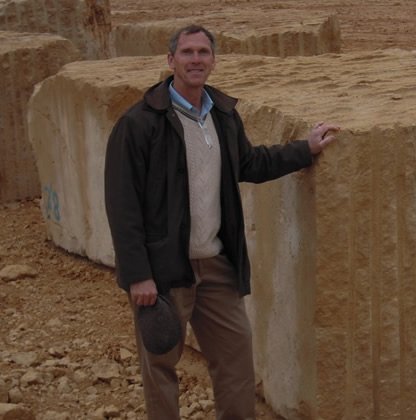Stone flooring has become increasingly popular and accessible over the years. Extremely common-place in commercial/retail settings, and highly regarded for its beauty and durability in the residential market. The long term value and appeal of natural stone is irresistible. But as amazing as natural stone flooring is to look at, the steps involved in its fabrication are even more impressive.
It’s important to remember that stone is 100% natural. The only ingredient is molten earth that has been cooled and hardened for 300 million years. The process really begins when large deposits of the right kind of rock are discovered – in the USA, or around the world, once excavation has begun, its called a quarry.
The word “quarry” comes from the Latin word for “squared.” In the beginning, quarrymen hand cut building blocks from the quarry. In some places the methods for cutting the stones have not changed since the early days. According to the World Floor Covering Association, there are still artisans who cut stone by hand with very simple tools. But quarrymen must compete with modern technology of high-speed tools and controlled explosives which can extract marble, travertine, granite and sandstone, with speed and efficiency. That’s what makes a stone floor affordable. Giant blocks of rock are cut with diamond studded, high-speed wire saws which have revolutionized the process of removing stone by hand. Other techniques use highly controlled explosives to cut large slices from the earth.
I have personally traveled to quarries around the country and in Europe, to understand firsthand, the quarry process and to select out the best blocks of stone material for our clients specifications. The color selection in a quarry varies in layers known as benches. As a stone specialist, its critical to understand that a custom order must be managed with the quarry to control the selection process and variations that will effect color range.
Blocks of stone are moved from the quarry to a processing plant where they are cut into slabs. Again, modern technology makes this process much easier. High-speed gang saws fitted with several blades, typically about 12 to 15 feet long, make simultaneous parallel cuts. It takes about two days to completely cut a 20-ton block of stone.
In order to present consumers with the widest variety of stone flooring, slabs must be finished. The type of finish will vary depending on the look you desire. The polishing machine uses spindles that rotate polishing pads at high speeds over the top of the stone. During this point, the slab is also calibrated. Calibration is a process of machine honing the back of the piece to either a smooth or ribbed finish, ensuring the same thickness for the whole slab.
Fabricators take the large slabs and customize them for specific installations. Edges are shaped and polished with a series of small diamond-studded and water-cooled saws or router bits. If the slab is destined to become tiles, it is cut down into smaller squares in a range of sizes: 12” x 12”, 16” x 16”, 18” x 18”, or to your custom specificiation. Then each tile is sent through a final finish: whether polished or honed, acid washed, brushed, flamed, etc. Finally, the tiles are packaged and shipped.
Natural stone flooring is a great choice and an investment that can last a lifetime. Allow Monarch Stone International to assist you in the process of selecting natural stone for your project.

